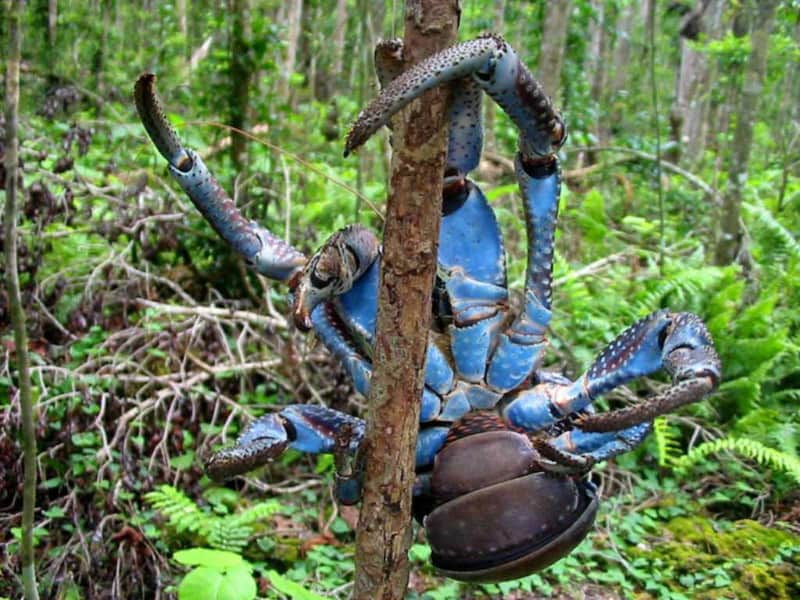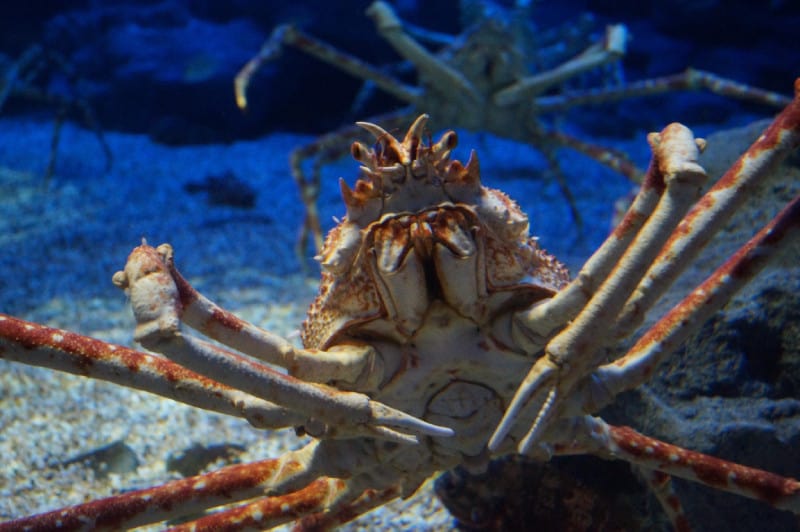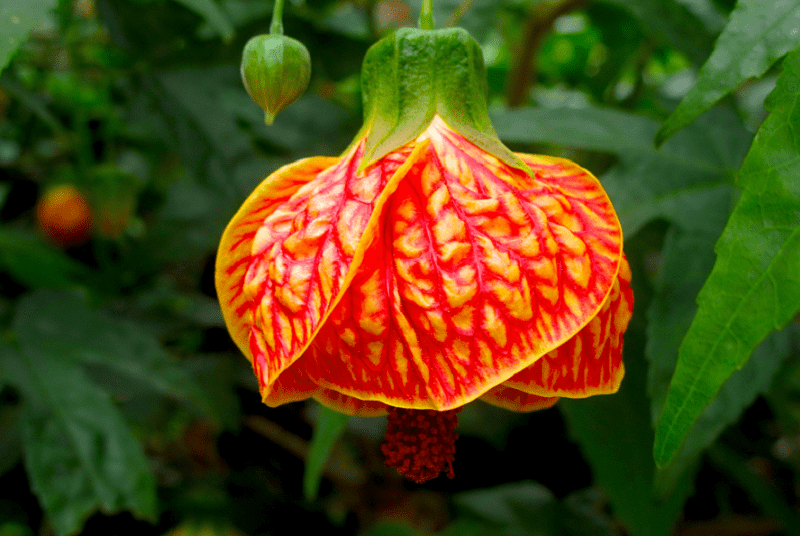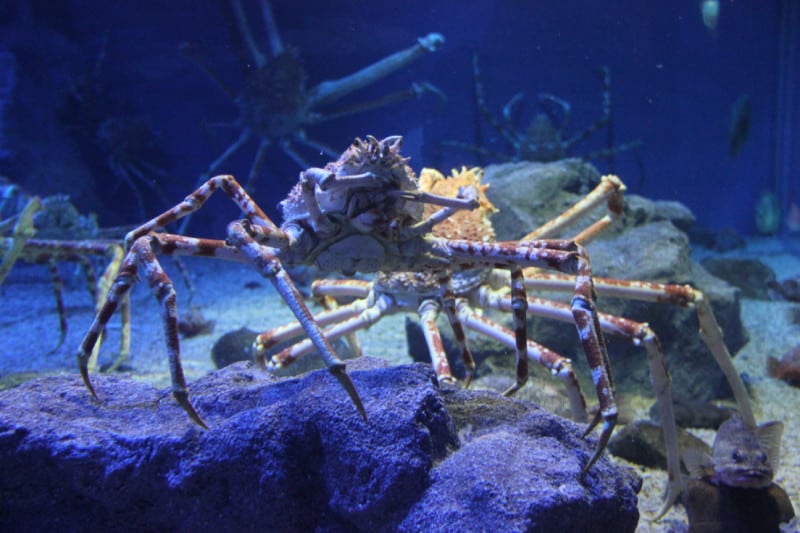Japanese Spider Crab Facts
- This monstrous Arthropod most frequently goes by the informative and descriptive common name of the Japanese Spider Crab. That’s the english language version, though. In Japanese, this magnificent animal’s known as the taka-ashi-gani.
- Among scientific researchers, however, it’s more commonly referred to by yet another title. That’s the technical name for the species. Like most such terms, though, it’s quite difficult for the layperson to pronounce. Its formal name is Macrocheira kaempferi.
- The massive marine creature received that name due to the efforts of Coenraad Jacob Temminck. The noted Dutch zoologist accomplished the first formal acknowledgement of it as a separate and distinct species. He achieved that feat in the year 1836.
- Regardless of which of these titles one chooses to use, it stands out from all of its kindred. This remarkable product of Nature and evolution ranks as the largest of all known living arthropods. That alone distinguishes it from its numerous relatives.
- Sadly, the population numbers of the Japanese Spider Crab are dwindling. Regrettably, this trend further appears to hold true throughout the entirety of its range. Despite this, however, it does not yet show on the IUCN Red List of Threatened Species.
- It nevertheless faces multiple threats to its continued existence as a species. Most of these stem from the actions of humans. These include overfishing and habitat loss. It also now faces the same looming peril of climate change as all earth’s species.
Related Articles




Japanese Spider Crab Physical Description
The breathtaking Japanese Spider Crab instantly grabs the attention of those fortunate enough to encounter it. The reason for that remains undeniable. This particular Arthropod literally ranks as a giant among its kind, and the viewer easily confirms this status.
Like many related creatures, it also displays a certain degree of the physiological characteristic known as sexual dimorphism. In its specific case, the males typically display slightly longer chelipeds, also known as claws. This trait also occurs in some related species.
In all other aspects, the genders usually present the same overall appearance. The body attains an average width measuring roughly 16 in (40 cm). In terms of weight, though, individuals of both sexes reach a mean mass totaling approximately 42 lb (19.1 kg).
Yet it’s the legs of the animal that stand out the most. These appendages also account for the vast majority of its size. That’s because this marine crab develops a truly mind-boggling legspan. Mature specimens achieve spans of as much as 12.5 ft (3.8 m)!
The gender-based difference found among the Japanese Spider Crab, meanwhile, manifests itself in a very precise manner. That’s in the simple size of its chelipeds, also known as claws. Among males, these reach a significantly greater length than among the females.
The carapace itself is quite bumpy in nature. In coloring, though, all specimens present the same basic pattern. This consists of a primarily bright orange background. Multiple white spots generally augment this, though. That’s especially true on the greatly out-sized legs.
- Kingdom: Animalia
- Phylum: Arthropoda
- Class: Crustacea
- Order: Decapoda
- Family: Inachidae
- Genus: Macrocheira
- Species: M. kaempferi
Japanese Spider Crab Distribution, Habitat, and Ecology
Unfortunately, the amazing Japanese Spider Crab appears to have evolved as native to a very small section of the globe. Its very name provides a clear indication of that range, of course. It developed as endemic to a very specific and limited portion of Asia.
The majority of that exact zone of habitation, obviously, consists of the waters around Japan. Even there, though, it’s limited in range. The creature mainly seems to live off the southern coasts of the island of Honshu. Small numbers do appear in two other tiny spots, though.
These consist of the marine waters near the coast of the Iwate Prefecture, in Japan, and along the coastline of several parts of Taiwan. In each of these separate regions, however, the Decapod displays decided preferences regarding its choice of habitat.
Individuals prefer to inhabit various vents and small holes along the ocean floor. The awesome species also presents a preference for a certain range of depths. Examples of this natural marvel are only known to live at depths ranging from 160 – 1,970 ft (50 – 600 m).
Like its many kin, the Japanese Spidere Crab evolved as omnivorous in nature. It therefore consumes both plant and animal matter, seemingly indiscriminately. The crab often preys of small molluscs, in addition to eating plants and algae. It also sometimes eats carrion.
Astoundingly, the females sometimes lay as many as 1.5 million eggs per breeding season! These then hatch after an average of a mere 10 days. Its precise lifespan remains undetermined by science, but many researchers estimate it could live in excess of 100 years.
Species Sharing Its Range



Check out our other articles on Tree Kangaroo, 10 Extraordinary Reptiles, Marine Iguana, Green Anaconda, Fennec Fox, Kali Gandaki Gorge, Harlequin Shrimp, Living Stones











Leave a Reply